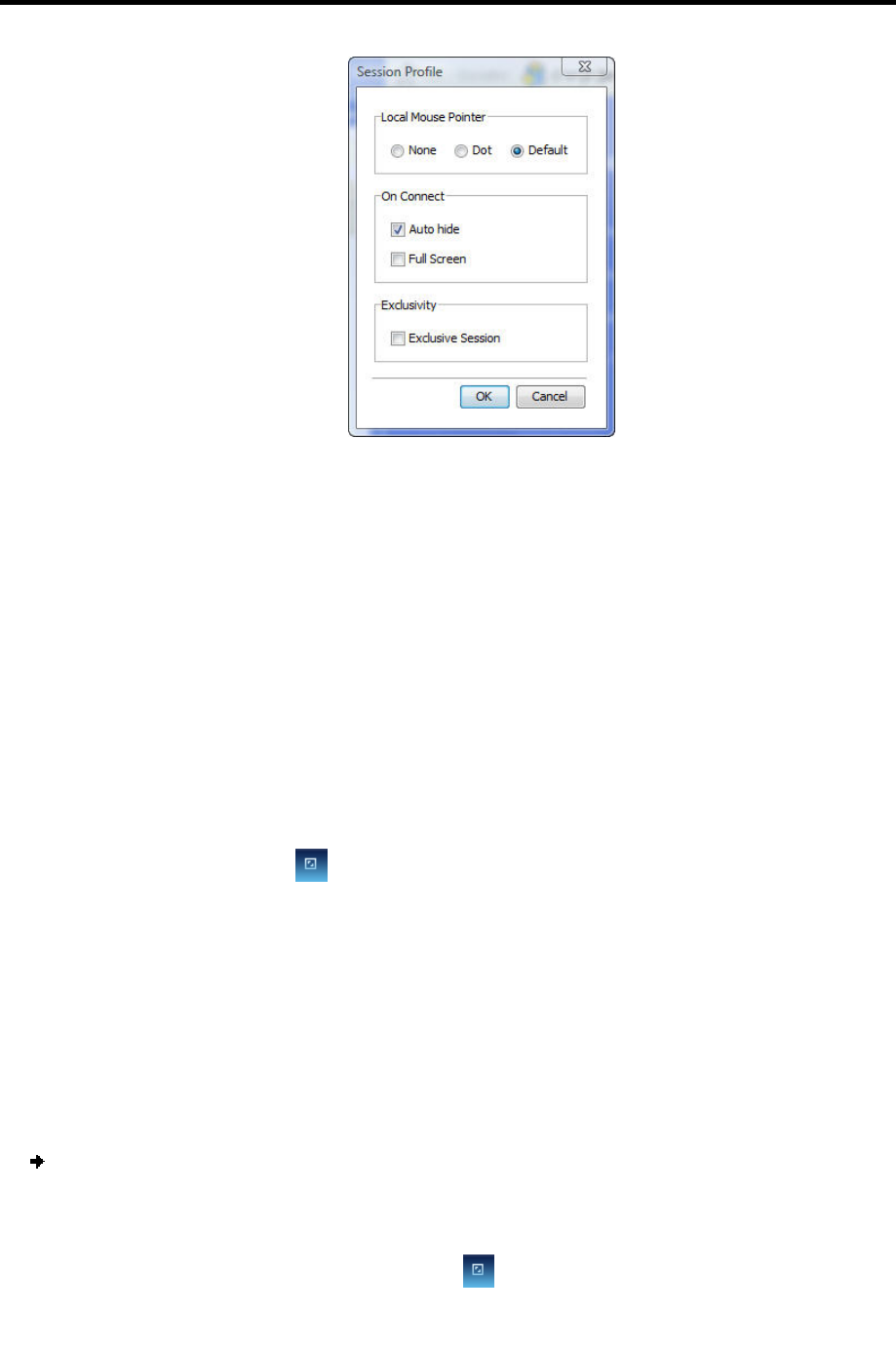User guide
Table Of Contents
- 1 Introduction
- 2 Installation
- 3 Configuring the Network
- 3.1 Boot-Up Process
- 3.2 Logging Onto the Web Configuration Interface
- 3.3 Configuring the Network Settings
- 3.4 Configuring Network SNMP Settings
- 3.5 Configuring User Settings
- 3.6 Configuring the KVM Switch
- 3.7 Configuring the Security Settings
- 3.8 Performing Additional Configuration Operations
- 3.9 Reloading a Page
- 3.10 Saving Changes and Logging Out
- 4 Conducting a Remote Session
- 4.1 Starting a Remote Session
- 4.2 Sharing a Remote Session
- 4.3 Displaying the Toolbar
- 4.4 Setting the Session Profile
- 4.5 Verifying Remote Presence Solutions Information
- 4.6 Changing the Video Performance Settings
- 4.7 Adjusting the Video
- 4.8 Managing Keyboard Sequences
- 4.9 Synchronizing Mouse Pointers
- 4.10 Switching to a Different Server
- 4.11 Disconnecting the Remote Session
- 5 Troubleshooting – Safe Mode
- 6 Operating the SmartRack 116 IP Switching System Locally
- Activating Password Protection
- Changing the OSD Hotkey
- Activating Autoskip
- Serial Port
- Changing the Keyboard Language
- Editing the Switch Name
- Restoring OSD to Factory Defaults (F7)
- 6.3 Upgrading the SmartRack 116 IP Firmware
- 6.3.1 Downloading Update Software and Latest Firmware
- 6.3.2 Update Software System Requirements
- 6.3.3 Connecting the SmartRack 116 IP System
- 6.3.4 Connecting the RS232 Download Cable
- 6.3.5 Installing the Software
- 6.3.6 Starting and Configuring the Update Software
- 6.3.7 Verifying the Version Numbers
- 6.3.8 Obtaining New Firmware
- 6.3.9 Restoring Factory Settings
- 6.4 Troubleshooting – Update Software
- 7 Technical Specifications
- 8 Video Resolution and Refresh Rates
- 9 SNMP Events Table

Conducting a Remote Session
Setting the Session Profile
User Guide | 53
Figure 55 – Session Profile Dialog Box
2. In Local Mouse Pointer, select one of the following options to set the appearance of
the client computer mouse pointer:
None – to hide the mouse pointer
Dot – for the mouse pointer to appear as a dot
Default – for the mouse pointer to appear as a regular-shaped mouse cursor
3. In Auto Connect, select:
Auto hide – to hide the toolbar from the next connection onwards
Full Screen – to display the remote session screen in full screen mode from the
next connection onwards. To toggle full screen mode on and off, you can click
the Restore button
(see Section 4.4.1).
4. In Exclusivity, select the Exclusive Session checkbox when starting a remote
session and there are no other logged in users; this prevents other users from
logging into the session.
4.4.1 Full Screen Mode
You can work on the target server as if you are working on a local computer, using
full screen mode. In Full Screen mode, the desktop window disappears, and is
replaced by the accessed target server desktop.
To work in full screen mode:
1. Ensure that the client computer has the same screen resolution as the target
server.
2. On the toolbar, click the Restore button
.










